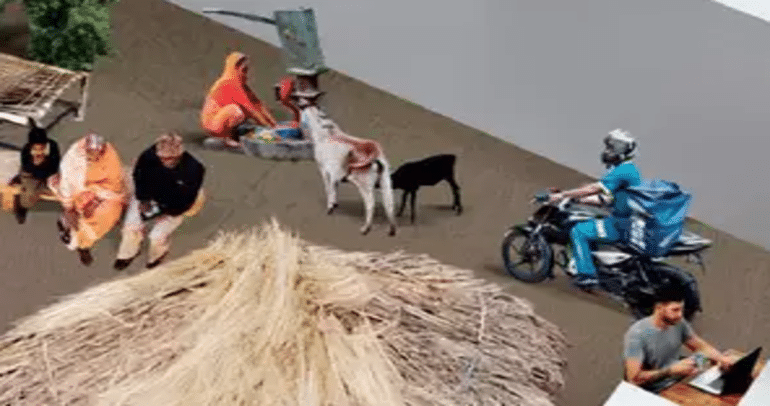THE ECONOMIC TIMES: Lunglei in Mizoram, Zunheboto in Nagaland and Hailakandi in Assam are thinly populated: with just 36, 112 and 497 people per square km respectively. For most companies, these Northeastern outposts are at the very bottom of their priorities, far removed from the bustle of their metrocentric business day. However, through much of 2017, executives at technology giant Amazon India spent a chunk of their time figuring out how to extend the reach of its business — fuelled by some $5 billion from its parent — deep into these districts.
While Amazon, its arch-rival Flipkart and other ecommerce companies have worked out the intricacies of sending millions of shipments to customers in cities, chasing down the next 100 million internet users in small towns and villages is the new holy grail. While the cream of the market — 20-30 million daily, active users from the 200-300 million who are connected to the internet in metros — is now habituated to the benefits of ordering off a plethora of apps, ecommerce companies will need to think differently if they have to successfully mine the hinterland for new users to sustain the industry’s breathless growth — forecast to hit $200 billion in 2026, according to Morgan Stanley.
If ecommerce has bought speed and convenience to urban consumers with three-hour, sameday and next-day delivery of clothes, electronics and groceries, the trickle down to smaller towns has taken a while. While poor infrastructure and patchy telecom networks would take some of the blame, experts say ecommerce companies must deal with immature markets and consumers who are wary about change. Companies have had to tweak business models, extend and improvise on logistics and supply chain, and patiently chip away at the suspicion of customers in the hinterland.
Shopping Cart Rolls to Small Town
Amazon executives say they get 70% of their business from small towns — compared with 50% a couple of years ago — and the firm is in a tear to be the go-to retailer for this segment. It has set up dozens of new distribution centres, allied with offline ventures like Store King and pushed logistics partners to go further — and faster. The company’s Udaan initiative to spread their net wide in rural areas is also booming with over 10,000 stores.
An estimate from RedSeer Consulting says non-metro shoppers will account for 75% of shipments in the ecommerce market in 2020, up from 60% in 2016. “Black swan events such as the entry of Jio and demonetisation provided significant impetus to pushing offline users to online, and basic internet users to start paying online,” says Kanishka Mohan, senior consultant, RedSeer. “The impact of these events will start showing up in the next two-three years, as the newest internet users evolve.”
Kanishka Mohan, senior consultant, RedSeer. ” Black swan events such as the entry of Jio and demonetisation have provided a significant impetus to pushing offline users to online, and basic internet users to start paying online. The impact of these events will start showing in the next 2-3 years as the newest internet users evolve digitally and gain comfort with using and consuming online”

Click Here for the complete Article.

